The Holdings
Jacques Puffeney
Cuvée du Jubilé Arbois Poulsard Trousseau 2014
Sadly the last commercial vintage from the “pope of Arbois.” (I guess “Puff Daddy” was already taken). Excited to try some of the newer releases from Domaine du Pelican who acquired a lot of Puffeney’s holdings. As for this wine, it’s exceptionally beautiful and I’m just going to enjoy it rather than pick it apart. Elegant, vivacious, soulful, just really captivating and only gaining in intensity with time in the glass. — 6 years ago
Weingut Hexamer
Meddersheimer Rheingrafenberg Spätlese Riesling 2017
As usual, this is the one dry Hexamer wine to perpetuate the tradition of Prädikat, and that is done solely to satisfy the Norwegian importer who takes all of it. (All to one country, yes; but this has become a high-volume cuvée by estate standards.) The fruit comes from the Eisendell as well as from a site known as Grosser Stein for the huge stone that marked the boundary between the holdings of the Rheingrafen (counts) and those of the Disibodenberg monastery. Picked nearly a month earlier than was the highly-impressive 2016, this weighs-in at 11.9% alcohol, and that shows in an attractive sense of levity and spring vis-à-vis Hexamer’s other dry Rieslings of this vintage. Fresh lime, apple, piquant aromas as well as a juicy, crisp-edged and pip-tinged presence on the glossy palate serve for penetrating. Subtly bitter but cooling and stimulating notes of melon rind compound the sense of crunch and piquancy while lovely, bittersweet inner-mouth perfume adds allure. The combination of vivacity and refreshment with floral and mineral intrigue renders the buoyant, bell-clear, seriously-sustained finish next-sip compelling. (David Schildknecht, Vinous, April 2019) — 7 years ago
Ladera Sagrada
Castelo do Papa Valdeorras Godello 2016
Ladera Sagrada has the largest holdings of vineyard land in the Valdeorras appellation, and the bodega makes wine using only the best 20% of its grapes, rest sold in bulk to other producers. Aromas of citrus and stone fruits and slight spicy notes. On the palate peach, lemon and crisp melon flavors and sweet pepper spice. Medium finish, generous acidity ending with mineral character. Nice value. Tasting Sample. — 7 years ago
Château Lafite Rothschild
Carruades de Lafite Pauillac Red Bordeaux Blend 2003
On the nose, ripe; blackberries, sweet & sour dark cherries, cooked cherries & strawberries & hues of blueberries. Black tea, cola, soft baking spices; vanilla, light clove & cinnamon. Crushed rocks, stones, limestone, turned, moist black earth, tobacco leaf, saddle-wood, soft leather, dry & fresh dark red florals.
The body is medium edging toward full. The tannins pretty well resolved. The ripe fruits show the hot, ripe vintage. Blackberries, sweet & sour dark cherries, cooked cherries & strawberries & hues of blueberries black tea, cola, soft baking spices; vanilla, light clove & cinnamon. Crushed rocks, stones, limestone, tobacco with ash, some graphite, soft medium dark spice, turned, forest floor, powdery but edgy minerals, saddle-wood, soft leather, dry & fresh dark red florals with some violets on the finish.
This showed better with Ribeye. The Ribeye brought out a fuller, richer wine with even more complexity. 9.35-9.4 with the Ribeye. It just missed 9.2 on its own. It’s big brother the 03 “Lafite” is 💯 point Parker wine.
Photos of; Chateau Lafite, their oak vat fermenters, Estate wine and their magnificent barrel room.
Interesting history and producers notes...Lafite Rothschild has a long and interesting history dating back to 1234, even though the property was not in the Bordeaux wine business at that time.
It is has been largely believed that vines were already planted on their terroir. The owner of the estate at the time, Gombaud de Lafite left his mark, his name. Almost 1,000 years after he owned it, the Chateau is still named after him! The vines were probably in existence at Lafite for over a century, it was not until around 1680, the majority of vineyards of what we know of as Lafite Rothschild today were created. This is because on the 1680 estate manifest, there are six mentions of their Bordeaux vineyards. Jacques de Segur, earns credit for cultivating the vineyard as I wrote in my Colon Segur post last weekend. In 1695, Alexandre de Segur married Marie-Therese de Clauzel, heiress to Chateau Latour. So to dovetail that write up, within a generation, the Segur family married into two of the greatest Bordeaux vineyards, Chateau Lafite and Chateau Latour! When their son, Nicolas-Alexandre passed away, Chateau Lafite and Chateau Latour were separated.
In 1797, Chateau Lafite was sold again. In the deed of sale, Chateau Lafite was described as a Premier Cru of Medoc. This is one of the earliest mentions of what we know of today as Lafite Rothschild producing wines of what would later be classified as an 1855 First Growth.
At that time, of Lafite were managed by the Goudal family. The Goudal family were wine historians and were able to read accurate records and details of the viticulture and marketing plans for Chateau Lafite in the estates formative years. The Goudal family gets the credit for creating the cellar and saving many of the oldest bottles that remain in the cold, dark cellars, including their oldest bottle, the 1797 Lafite!
The start of the famous Rothschild family begins in 1744, with the birth of Amschel Meyer. Amschel Meyer began creating his fortune while working as a merchant at “Zum Roten Schild,” which eventually became the family name of Rothschild.
In 1798 his sons were sent to various cities to create their fortunes. Needless to say, his sons all prospered as did their children in turn. This eventually led to them wanting to own a Chateau in Bordeaux. So in 1853, Baron Nathaniel de Rothschild, an English member of the Rothschild family, purchased Chateau Brane-Mouton. As was the custom of the day, the new owner renamed it using his name and Chateau Mouton Rothschild was born.
This was followed in 1868, when James Rothschild, another member of the family purchased Chateau Lafite, which was now a coveted First Growth.
On 8 August, 1868, Baron James d’Rothschild purchased Chateau Lafite, which was sold at a public auction in Paris. It’s assumed, he bought the property for family competitive reasons looking to one up his brother, the owner of Mouton Rothschild. At that time, Mouton Rothschild was only a Second Growth at the time. But, that does not paint the entire picture. The 1855 Classification had not taken on the importance associated with it the we see it today. Plus, buying Lafite was a reasonable investment as the vineyard sold for about 8 times its earning potential.
The actual Chateau is one of the older structures in Bordeaux, as part of the building dates back to the later part of the 16th century. In 1868, the vineyard took up 135 hectares, of which 74 hectares were cultivated with vines. Production was much smaller in those days than it is today as it was between 4,000 and 5,000 cases.
Just three months after the purchase, Baron James d’Rothschild passed away and Chateau Lafite Rothschild became the joint property of his three sons; Alphonse Rothschild, Gustave Rothschild & Edmond Rothschild. Since 1868, Chateau Lafite Rothschild has remained in the hands of the of Rothschild family. The new owners renamed the estate Chateau Lafite Rothschild.
Jumping ahead to the modern age, in 1962, the Rothschild family added to their holdings when they purchased Chateau Duhart-Milon, a Fourth Growth vineyard also located in Pauillac. It was owned by the Casteja family for more than a century, Chateau Duhart Milon suffered from neglect and was in a awful condition. By the time Duhart Milon was obtained by the Rothschild family, the vineyard was down to only 17 hectare which required extensive renovations.
Baron Eric Rothschild, nephew of Baron Elie Rothschild, took over the management of Lafite Rothschild in 1974. Baron Eric Rothschild was part of the fifth Rothschild generation to inherit Chateau Lafite Rothschild. In 1984, the Rothschild family added to their holdings in Bordeaux with the purchase of Chateau Rieussec in Sauternes.
1987 was a difficult vintage, but because that was the year Lafite celebrated the inauguration of their wine new cellar, they had a lot to be excited about.
The new cellars were built under the supervision of Catalan architect Ricartdo Bofill, is both underground and circular, with a vault supported by 16 columns, giving the structure a majestic architectural style. The cellar holds 2,200 barrels, which is about 55,000 cases of wine. The construction took two years to finish and was completed in 1988.
Domaines Baron Rothschild became one of the first Bordeaux properties to invest in South America when they purchased Vina Los Vascos from a Chilean family. The owners of Lafite Rothschild continued expanding their holdings with the purchase of Chateau lEvangile in Pomerol from the Ducasse family, who owned the property for almost 100 years.
The wine making at Chateau Lafite Rothschild was managed by Charles Chevallier, who began his position in 1994. Charles Chevallier was replaced by Eric Kohler in January 2016. 2017 saw another change at the estate when Jean Guillaume Prats replaced Christopher Salin as the President of Domaines Baron Rothschild.
Perhaps, it’s the most refined of the First Growth. The wine, like all First Growth’s takes decades to mature. It has remarkable staying powers. Bottles of 1870 Lafite Rothschild discovered in the Glamis castle remain profound at more than 140 years of age! It is consider by many Master Sommeliers to be the best wine in the world.
Chateau Lafite Rothschild is one of the earliest major Bordeaux estates to bottle their own wine. In 1890, they bottled a large portion of the wine and again in 1906. Part of the estate bottling was due to requests from Negociants who were willing to pay more for Chateau bottled wines. Also, bottling was primarily done to combat piracy. At the time, it was known that merchants in some countries, like Russia were bottling cheap wine and placing labels from Lafite Rothschild on the bottles. The Koch’s famous Jefferson bottles were not the first attempt at counterfeiting.
Prior to 1996, some would say the property had its share of ups and downs. The 1960’s and 1970’s were not great for Chateau Lafite Rothschild. But since 1996, Lafite Rothschild has been producing some of the best wine in their history!
Sadly, only the wealthy can afford to purchase it. Price aside, there is no denying the level of quality. In 2003 Lafite Rothschild produced a wine that is possibly unequaled by the estate at any time in their long history. Hence, my purchase of their 03 second wine. 2009, 2010 and 2016 are not far behind.
Starting in about 2008, Lafite Rothschild became the most collectible wine from Bordeaux. Prices exploded due to demand from China as Chinese businessmen bought them as gifts or bribes depending on you look at it.
The reason this started was Lafite Rothschild paid for product placement on the number one rated Chinese soap opera on television. Characters in that show were pictured enjoying life with Lafite Rothschild and since then demand went through the roof as did priced.
However, Issac Newton had it right when he declared “What goes up, must come down.” Prices for Lafite Rothschild plummeted after 2011. By the difficult 2013, prices were finally starting to hold firm, but many of the vintages that were setting price records on a daily basis had lost close to 50% of their value.
Starting with the 2012 vintage, Chateau Lafite Rothschild began instituting anti-counterfeiting measures. From 2012 forward, to help fight, rampant counterfeiting, the estate places a seal of authenticity on the capsules of both Lafite Rothschild and Carruades de Lafite. The seal features a unique, numbered code that can be checked on their website, to verify if the wine is real.
The 112 hectare vineyard of Chateau Lafite Rothschild is planted to 70% Cabernet Sauvignon, 25% Merlot, 3% Cabernet Franc and 2% Petit Verdot. This shows a slight change in the vineyard.
While Cabernet Sauvignon remained at 70%, today there is slightly more Merlot, less Cabernet Franc and the Petit Verdot has been added since the mid 1990’s.
Located in the far north of the Pauillac appellation, only the small, Jalle de Breuil stream separates the vineyards from St. Estephe. You could divide the vineyards of Chateau Lafite Rothschild into three sections with 100 separate parcels in all. The estate has close to 50 hectares of vines located close to the Chateau, on both sides of the D2, which offers gentle rises in elevations of up to 27 meters. They also have about 50 hectares vines planted on the plateau in the Carruades sector, where they have two blocks of vines, one of which is inside the vineyard of Chateau Mouton Rothschild. It is interesting to note that even though the parcels in the Carruades sector give their name to the second wine of the estate, those vines are almost always placed in the Grand Vin.
There are also vines adjacent to, and interspersed with the vineyards of Chateau Duhart Milon. The property also consists of a smaller, 4.5 hectare parcel of vines located in the Saint Estephe appellation, “La Caillava”. The vines in St. Estephe are situated not that far from Cos d Estournel, which are located on a larger a parcel known as Blanquet. The vines in Saint Estephe are allowed to be placed into the wine of Chateau Lafite Rothschild because those vines were used to produce Lafite in 1885, at the time of the classification. The vineyards are close to their famous neighbor Mouton Rothschild.
Located just south of the Chateau, the best terroir of Lafite Rothschild has a thick layer of gravel with sand, clay, marl and limestone in the soils with rolling, gravel slopes. The gravel can be as deep as 4 meters in some parcels.
It is important to note that even though their vineyards are in the far north of Pauillac, most of the soil is pure gravel, rocks and stones. With more than 50% of the soil consisting of gravel, that is a large part of the reason Lafite Rothschild has such elegant, feminine textures and that coveted sensation of minerality.
On average, the vines are close to 40 years of age. However, Chateau Lafite Rothschild has much older vines. In fact, they have some vines that are more than 100 years of age planted in the La Graviere section. That small parcel of Merlot vines dates back to 1886. Less than 1% of the vines are that old.
Additionally, they have a small section of Cabernet Sauvignon that dates back to 1922! Other old vines range from 50 to 90 years of age! They also maintain some of the oldest Petit Verdot vines in the Medoc that was planted in the early 1930’s.
At Chateau Lafite Rothschild, between 1% to 1.5% of the vineyard is replanted every year. Vines less than 20 years of age are never included in the Grand Vin.
The vineyard of Chateau Lafite Rothschild is planted to a vine density that ranges from 7,500 to 8,500 vines per hectare. Only organic fertilizers are used in the vineyards of Lafite Rothschild.
During harvest, the goal is not to pick at the maximum level of ripeness. Instead, they are seeking a blend of grapes at differing levels of maturity, which gives the wine its unique textures, freshness, aromatic complexities and elegant sensations.
Lafite Rothschild is the largest of the First Growth vineyards with close to 112 hectares of vines. A large portion of the estate is taken up with stunningly, beautiful landscaping, lakes, trees and parkland.
At one point in time, Chateau Lafite Rothschild produced a dry white, Bordeaux wine that was sold as Vin de Chateau Lafite. The wine was produced from a large percentage of Semillon, blended with a small amount of Sauvignon Blanc. The last vintage for their white wine was 1960. The wine was sold as a generic AOC Bordeaux blanc with a simple, scripted label, black and white label.
Lafite vinification takes place in 66 vats that are a combination of 29 wood vats, 20 stainless steel tanks and 17 concrete vats that range in size from as small as 45 hectoliters up to 123 hectoliters in the concrete and as large as 270 hectoliters for the wood. The wide range of vat sizes coupled with different materials allow Chateau Lafite Rothschild to vinify depending on the needs of each specific parcel and grape variety. The stainless steel tanks and oak vats are used for Cabernet Sauvignon. The Merlot is vinified in the concrete tanks. Malolactic fermentation occurs in smaller, stainless steel tanks that vary in size from 25 hectoliters up to 60 hectoliters. At this point, Chateau Lafite Rothschild does not yet use gravity to move the fruit and juice in the cellar. It’s a good bet that a remodel is coming soon.
The average annual production of Chateau Lafite Rothschild ranges from 15,000 to 20,000 cases of wine per year, depending on the vintage. They of course make this second wine, Carruades de Lafite, which due to the name and association with the Grand Cru, has also become extremely collectible. Carruades de Lafite takes its name from a specific section of their vineyard that is located near Mouton Rothschild. Carruades is actually one of the older second wines in Bordeaux, as it was first produced in the mid 1850’s. About 100 years later during the mid 1960s, the estate reintroduced their second wine naming it Moulin de Carruades. The name was changed again in the 1980’s to Carruades de Lafite.
There is also a third wine which is sold as an AOC Pauillac that is produced from declassified fruit from Lafite Rothschild and Duhart-Milon.
The blend for Chateau Lafite Rothschild changes with each vintage depending on the character and quality of the vintage. Generally speaking, the amount of Cabernet Sauvignon in the blend ranges from 80% to 95%. Merlot is usually 5% to 20%. Cabernet Franc and Petit Verdot usually varies from 0 to 5%.
— 8 years ago

Domaine Leroy
Bourgogne Pinot Noir 2015
On the nose, nicely concentrated wild dark berries, black plum, notes of blue fruits, vanilla, understated cinnamon, soft, warm spices, Christmas cake and fresh dark, fragrant florals. The mouthfeel is rich & concentrated. The fruits dark are clearly fresh & ripe. Wild dark berries, black plum, plum, dark cherries, poached strawberries, black raspberries, Thompson raisins, light vanilla, soft warm spices, limestone minerals, grainy/silky chalkiness, dark moist soils, crushed rocks, violets, fresh dark florals, touch of mint, beautiful round acidity and amazing long rich beautiful finish that is well balanced fruit & earth. This is a vintage (even though Bourgogne) will cellar around 20 years. My rating could jump 2-3 points with proper storage years in the cellar. It's tasting more like 1st Cru than village wine. Photo tour of the estate, open top fermenters (I believe they ferment all their lots separately) and Lalou Bize-Leroy singing and talking to her precious vines. Producer history and notes...Domaine Leroy is arguably producing the greatest red Burgundy wines in the Cote d`Or at present. Lalou Bize-Leroy started out as a négociant, working for her family's Maison Leroy, which was founded by her father Henri. There are three parts to the Leroy empire; the Maison Leroy based in Auxey-Duresses, Domaine d’Auvenay and substantial holdings in Vosne-Romanée. Lalou Bize-Leroy also owns 25% of Domaine de la Romanée-Conti, where she was co-director until the other shareholders ousted her in 1992, partly because she had started a competing winery. Domaine Leroy has been farmed biodynamically from the start and is now certified by ECOCERT. The other exciting, if not controversial, move was the change in training system for the vines. For some time previously the hedging (rognage) of the vineyards had been done by hand rather than more abrasively by machine. However, it is not natural for the vine to be cut back as it affects the vine’s performance both in the current season and the following year. So now, after the flowering, when the shoots are lengthening, they are curled over instead of being cut back. This minimises entrecoeurs and second crop bunches forming, as well as leaving the vine happier and healthier. She also talks and sings to her vines daily. She believes this promotes health of the vines and who could argue with her given what she puts in the bottle. Lalou Bize-Leroy has 23 hectares of vines, mostly Premier and Grand Cru classified. In the vineyard, Lalou practices biodynamism as well as severe pruning and crop-thinning. The result is ridiculously low yields. Yield arguments at DRC were also an issue in her departure. You want to buy this wine. $39.99 at K&L Wine Merchants on pre-arrival. Just bought four bottles.
— 8 years ago
Jean-Marc Pillot
Les Chenevottes Chassagne-Montrachet 1er Cru Chardonnay 2012
Pillot's Holdings in Northern Chassagne are Modest (.29 Hectares / ~ 60 yr. Vines) -- Charged with Almond, Oak, Lemon... — 9 years ago
The Holdings
Vintner's Select Cabernet Sauvignon 2013
Garnet Color. Blueberry. Sweet. Smooth. Nice Tannins. Delicious! — 11 years ago
Ciacci Piccolomini d'Aragona
Pianrosso Brunello di Montalcino Sangiovese 2001
From the Count's holdings, this did not disappoint. Extremely ripe and youthful. Evolved a bit over the night but this is certainly a ripe, concentrated style of wine. — 5 years ago
Domaine Moreau-Naudet
"Forêts" Chablis 1er Cru Chardonnay 2017
WNH white burgundy theme.
The domaine's holdings in Forets is made up of two parcels, totaling just under 2 hectares. The older parcel is of 60 year old vines and is right next to Vincent Dauvissat's holdings. The second is made up of younger vines (25 years old) and is next door to Raveneau's parcel of Forets.
Chablis is hit or miss for me, but this was a total hit. What made this special for me was the weight in the mid palate. Obviously youthful, but from a great vintage. Aromatically, it showed honeysuckle, citrus, and grilled lemon rind. At pop, the mid palate was hollow but it gained a lot of weight after two hours. Golden delicious apples, limestone, more citrus and a touch of honey. The entry shows good acidity but the star of the show is the mid palate. As expected, temperature made a big difference here...slightly above cellar temp seemed best as a touch more fruits showed up (added pear). Paired wonderfully with truffle marcona almonds. — 5 years ago

The Holdings
Syrah Malbec 2016
2016 the perfect blend. Absolutely gorgeous! — 7 years ago
Mas de Boislauzon
Châteauneuf-du-Pape Red Rhone Blend 2007
This is gorgeous tonight. Continue to find that Mas de Boislauzon is consistently one of the best value CNDP around, true to place and terroir driven on all fronts, from traditional cuvée to their prestige offerings. I think the hearty amount of Mourvedre and plenty of holdings in sandy dominated soils of the N/NE part of the appellation make for a remarkably dense, balanced and textural wine. I feel like some 07’s have hit their mark in the last couple years and this is in a sweet spot to me. Nose is meaty, lifted with smoke, hot stones, porcini, truffle, espresso bean, plum marmalade, lavender pastille. Palate is more kirsch, compote, cinnamon, licorice whip, candied bacon, woodsmoke, and stones again. Structurally theres a great interplay of moderate but present acid and granular tannin. Perfect foil for a bacon and mushroom cheeseburger 🤤 — 7 years ago
Franz Karl Schmitt
Niersteiner Pettenthal Auslese Riesling 2001
I heard something today on IDTT that exemplifies tasting this wine - never explicitly was the term "great" terrior used, but I think it's safe to say that the discussion was about great terrior. A "great" vineyard isn't necessarily better than others in terms of quality... Or even necessarily need to represent the covering GI... but it is "great" because of clarity. It produces a unique expression CONSTANTLY, irrespective of vintage or producer. In short, it speaks precisely of a place... Cliché but truly. And that's Pettenthal! Time and time again I've seen this. With KP, Kai, Gunderloch, Kuhling-Gillot. Pettenthal is great and this wine sealed it for me.
Brought this to blind KP. It was an obvious choice since KP's tiny super plot was once part of FK Schmitt's holdings. Despite the differences with KP's insane 17' auction wine (vintage, style, vineyard size, philosophy), this wine was clearly Pettenthal. That cool and smoky elements that I've learned to associate with the vineyard, fine minerally backbone. Damn! This has to be one of the most tightly focused aged Auslese's I've had in a while. What a pristine bottle - all thanks to Roland's exquisite sourcing skills. Stone fruits, petrol, honey, spice, umami elements. Finish was admittedly one-dimensional. Could be longer. Still, what a lovely #rieslingstudy — 7 years ago
Château Calon-Ségur
Saint-Estèphe Red Bordeaux Blend 1996
On the nose, a touch of barnyard. Sweet & sour dark cherries, blackberries, black raspberries, baked strawberries and hues of blue fruits. Dry crushed rocks, dry stones, rich black turned, soft leather, cedar, underbrush, tobacco, light vanilla & clove, medium spice, limestone, fresh & withering dark red floral bouquet.
The body is just full. The tannins are soft, rounded, chewy & sticky and still have some teeth. The wine elegantly guides smooth over the palate...very little that pushes back. It’s still youthful but not as youthful as my expectation. Sweet & sour dark cherries, blackberries, black raspberries, baked strawberries and hues of blue fruits. Dry crushed rocks, dry stones, rich black turned, soft leather, cedar, underbrush, tobacco, some dry herbal notes, sweet tarry notes, light vanilla & clove, medium spice, powdery limestone, loamy clay & top soil, graphite, dark spice with lifting heat, fresh & withering dark red floral bouquet and haunting violets. The acidity is near perfect. The structure, tension, length are in a very place but, will still improve for another 15+ years. The long, finish is ripe, round, balanced and lasts minutes.
Photos of, the Chateau, Technical Director Vincent Millet, beautiful stainless steel tank room and their new barrel room.
Producer notes & history...historic records show that Calon Segur was in existence as far back as 1147, when it was owned by Monseigneur de Calon. He was an important Bishop in the community. This makes Chateau Calon Segur one of the very oldest properties in Saint Estephe. Eventually, the property came to be owned by Nicolas Alexandre de Segur. Hence where part of the name of the Chateau comes.
After passing through generations, the estate became the property of the famous Marquis de Segur. de Segur is an important figure in Bordeaux history, not only for his ownership of numerous top Bordeaux estates in that day but, he also owned Lafite and Latour. de Segur is credited with uttering the words that spawned the idea behind the heart shaped logo of Calon Segur. The story is that de Segur is quoted as saying: “I make my wine at Lafite and Latour, but my heart is in Calon.” This famous saying lives on the label of Chateau Calon Segur, where the drawing of a heart is prominently featured on the bottle.
Chateau Calon Segur was one of the original three Bordeaux vineyards in Saint Estephe. In 1825 Chateau Montrose was a forest without a single vine belonging to the massive Calon Segur estate. In fact, Chateau Phelan Segur was also once part of the vast Segur estate. The holdings of the Segur family were so large, they included what would later became Chateau Lafite Rothschild, Chateau Latour and Chateau Mouton Rothschild!
The more modern era by European standards began in 1894 when its Left Bank vineyards were purchased by Georges Gasqueton and Charles Hanappier. Hanappier was a large negociant at the time. The Gasqueton family managed the estate until 2012. Madame Gasqueton ran the estate until she passed away at the age of 87 in late September, 2011.
In July of 2012, Chateau Calon Segur was sold for 170 million Euros or 215 million US dollars. The buyer was a French Insurance Company, Suravenir Insurance. Jean-Pierre Moueix, the owner of Petrus and the massive negociant company Duclot also took a minority stake in Chateau Calon Segur.
Since taking over Calon Segur, they started renovating the property with the focus on the wine making facilities. They followed a trend to vinify on a parcel by parcel basis. The estate replaced their older vats with new stainless steel tanks that vary in size and number to match the size of the various vineyard parcels.
The new tanks accompany a completely new vat room as well with everything moving completely by gravity. The new tasting room was remodeled as well. The renovations were completed in 2016.
Their cellars also needed work. Immediately after closing, the new owners began an extensive replanting of the Calon Segur vineyard. There were a number of reasons they chose to do this. They needed to increase the level of vine density and add more Cabernet Sauvignon.
The extensive renovation of Chateau Calon Segur cost somewhere north of 20 Million Euros. Other changes, the new owners took full control and brought in Vincent Millet as the Technical Director.
The 55 hectares of Calon Segur are located just north of the small town of St. Estephe and are planted to 53% Cabernet Sauvignon, 38% Merlot, 7% Cabernet Franc and 2% Petit Verdot.
Chateau Calon Segur is one of the few walled in vineyards in the Left Bank. Calon Segur is also known as being the northern most Classified Growth in Medoc.
The terroir of Calon Segur is a blend of gravel, rocks, clay, sand and limestone soils on the surface with gravel that can be as deep as 5 meters. Underneath, you find marl, clay and limestone.
On average, the vines are 25 years of age. However, they have older vines that range in age from 45-60 years of age.
The vineyard of Chateau Calon Segur remains almost exactly the same as it did at the time of the 1855 Classification.
Since the remodel was completed, fermentation takes place in 70 conical shaped, stainless steel tanks that range in size from 25 hectoliters to 120 hectoliters. Vintages are now aged in 90% to 100% new, French oak barrels for up to 20 months.
Production of Chateau Calon Segur is around 20,000 cases per year. They also make a second wine, which was originally named Marquis de Calon. Now, the second wine is sold under the name of Le Marquis de Calon Segur.
There is also a third wine, which is sold under two names, La Chapelle de Calon, and St. Estephe de Calon Segur, which is produced from vines that mostly come from a specific plot with more limestone. — 8 years ago
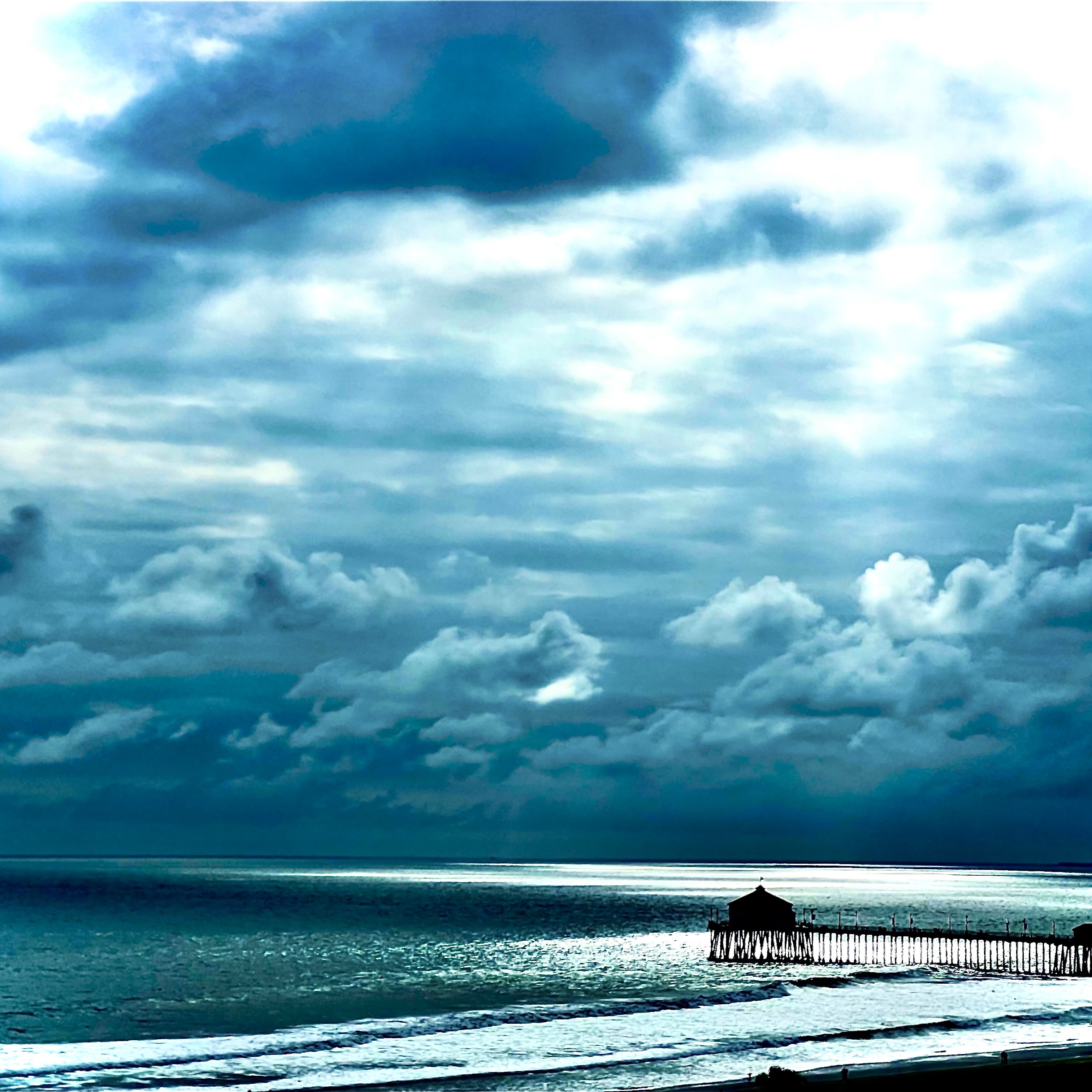
Del Dotto Vineyards
The Beast Rutherford Cabernet Sauvignon 2012
Decanted 1 hour
Comprised of their top barrels from Pritchard Hill, Rutherford, Oakville, Howell Mtn. & St. Helena Vineyards.
WOTN
Consensus 98 Points
Deep, loamy, thick concentration, fruit bomb with fine tannins. Lot’s of life in it! Drinking nicely right now. Cheers 🍇🍷👍🏻👏🏻
Here’s RP’s Review:
2012 Del Dotto The Beast Cabernet Sauvignon – Rated 98-100
“Made from a blend of all Del Dotto’s vineyard holdings, the 2012 Cabernet Sauvignon The Beast’s black/purple color is followed by a wine with off-the-charts richness, incredible density and abundant notes of black currant liqueur, blackberries, graphite, licorice, truffles and incense. This is another candidate for perfection. Full, dense and concentrated with no heaviness or astringency, it is a seamless, well-integrated Cabernet to drink over the next 25 years.” — 8 years ago
The Holdings
Vineyard Select California Cabernet Sauvignon 2014
It’s well balanced. You can have it with or without food and still enjoy it.
I used a decanter and that helped a lot to open it faster. — 8 years ago
Pepper Bridge
Estate Vineyards Walla Walla Valley Merlot 2014
The 14 is a blend of 77% Merlot, 16% Cabernet Franc & 7% Merlot. Nose of; ruby dark cassis, blackberries, black plum, dark cherries, black raspberries, hues of blue fruits, pepper and liquid violets. The mouthfeel is lush & ruby. M+ body & M+ tannins. Blackberries, dark cherries, black plum, black raspberries and hues of blue fruits. Crushed rocks, soft leather, dry herbs, underbrush, loamy soil powder, notes of cigar, violets, dark florals, nice acidity and beautifully round, lush finish with sex appeal. Photos of; an aerial view of Pepper Bridge, estate grapes going through veraison, Owner-Norm McKibben, and ground shot of the estate. Producer notes and history...Norm McKibben is one of founding fathers of Walla Walla's wine industry. To his good friends and colleagues, he is better know as "Stormin' Norman." In Norm's 30 plus years in Walla Walla, the valley has evolved from a 40 vineyard acres to an appellation with more than 2,800 acres under vine. A good portion of the boom can be attributed to Norm even after coming to the game late after working for several decades as an engineer in the construction industry. Not wanting to retire after, he moved to Walla Walla to become an apple farmer. In 1989, he realized Walla Walla's potential for grape growing. Norm planted his first vineyard with help from his wife, Virginia and their eldest son, Shane. Two years later, Norm added Cabernet Sauvignon and Merlot. These vines soon became the backbone of Pepper Bridge. Not long after he expanded his business and resume further. Norm got involved in the budding wine industry. He served as a partner and director at Canoe Ridge Vineyards, Hogue Cellars and worked with a number of Walla Walla's leading vintners. In 1996, he partnered with Gary Figgins of Leonetti Cellar and Marty Clubb of L'Ecole No. 41. At this point, McKibben had increased his vineyard holdings to 200 acres. In 1998, Norm officially started Pepper Bridge Winery. Today, Pepper Bridge Winery is a benchmark property in Walla Walla and Norm is an icon of the industry. He manages and consults for more than 600 acres of the top vineyard sites in Walla Walla; Pepper Bridge, Seven Hills and Les Collines. Norm also has introduced state of the art irrigation systems, soil moisture temperature monitoring equipment and sustainable farming techniques. Norm is a big believer in sustainable viticulture. All of his vineyards are certified sustainable by VINEA, the Walla Walla Valley's Sustainable Trust, and LIVE, an Oregon-based sustainable viticulture organization. They are also certified Salmon Safe and are monitored by the IOBC, the international body responsible for setting sustainability standards. In 1998, the Washington Association of Wine Grape Growers honored Norm as "Grape Grower of the Year." That same year, he was appointed chair of the Washington Wine Commission and served in that position until retiring from the organization in 2001. If there is a Maverick of the Walla Walla wine producers, it would be Norm. — 8 years ago
Domaine Denis Mortet
Mes Cinq Terroirs Gevrey-Chambertin Pinot Noir 2014
On the nose, sweet, floral, dark cherries, touch of plum, black raspberries, raspberries, red licorice/cola, lovely funk, canopy leaf, perfumed red florals and fine, sexy, chalky minerality. The mouthfeel is beautifully crisp...medium body. The fruits are bright and tantalizing. Strawberries, dark cherries with Rainer cherries blended in, cranberries, pomegranate, plum, black raspberry, raspberries, soft, super fine powdery chalkiness, crushed dry rock powder, light beautiful spice, red florals with a touch of violets, perfect acidity and a well balanced, polished finish. Photos of, the property entrance, Chevrey Chambertin vineyard and Arnaud. History and producer notes...Domaine Denis Mortet was founded by Denis Mortet in the early 1990s. Strangely, he took his own life at the age of 51 in 2006. He started with modest holdings to become a very well respected Winemaker in Burgundy with his 1993 wines. His son Arnaud has now taken over. The estate vines are relatively young at 25 years. The Domaine's 10 hectares encompass 14 different Appellations, including two Grands Crus in Clos-de-Vougeot and Chambertin. All their wines including their village wines see new oak. This wine is a blend of all their Chambertin holdings and fermented in around 30% new oak. — 8 years ago


Domaine du Clos de Tart
La Forge de Tart Morey St. Denis 1er Cru Pinot Noir
Supposedly exact same vinification and holdings as Clos de tart, but domaine has identified a different style. Pronounced menthol/eucalyptus note on the nose, good fruit but a little tight on nose and palate. Too much oak for my taste, bitter essential oils on the finish. — 9 years ago
Marc Brédif
Vouvray Grand Année Chenin Blanc 1988
Another of Baron Ladoucettes 'holdings. Natalie treated us royally here. This not only tasted great, it still seemed youthful. — 11 years ago
The Holdings
Vintner's Select Grenache 2010
Excellent Grenache- light & fruity with a clean finish. Great with all foods. — 11 years ago
Domaine Méo-Camuzet
Clos de Vougeot Grand Cru Pinot Noir 2017
Dense and a rich Ruby colour. A closed latent nose not giving much at this young age. Also relatively closed on the medium to full bodied palate. Far too young - has not entered its drinking window of 2024 to 2034 according to Julia Harding MW. Masculine and powerful - a lot hiding in reserve with this wine. 94 points for now but probably 97 points in 10 years. Clos de Vougeot is 60 Hectares making it easily the largest Grand Cru but to be fair some of the lower holdings down near the road are not of GC quality. — 5 years ago
Pierre Gimonnet & Fils
Expression D'Un Terroir Oger Grand Cru Brut Champagne
While Gimonnet has maintained Grand Cru holdings for decades, they have historically blended GC with 1er Cru, feeling better balance was achieved that way. I’ve never been one to argue that approach because the results have always been delicious, at least to my palate. However, Gimonnet broke tradition about ten or so years ago when they started bottling this single GC expression from Oger where they have about 1ha of Chardonnay. This bottle, disgorged in 2017, is like a laser beam of lemon, grapefruit and minerals and a perfect choice for a lazy weekend lunch with our hot ham and cheese croissants. Pound for pound, and in terms of availability (at least in my market) I’ve got to say that Pierre Gimonnet is one of the best growers out there. — 6 years ago
Famille Bréchet
Plateau des Chênes Lirac Red Rhone Blend 2016
Love me some Lirac! From The Brechet family’s (owners of Vaudieu in Chateauneuf) holdings in Lirac comes this super concentrated, fruit forward wine. Ripe black fruit, pepper, and licorice. Beautiful ripe fruit attacks the mid-palate leading to a silky, opulent finish. Not complex, but really enjoyable - tremendous value. 2016 vintage on Aug 2, 2019 — 6 years ago
Bernard Levet
Les Journaries Côte-Rôtie Syrah 2013
The Northern Rhône example in our little, impromptu North/South face-off during Christmas Eve dinner. This is a European bottled version of “Les Journaries” which is labeled there as “La Maestria”. Most of the grapes are sourced from Levet’s holdings in La Landonne. The bottle was opened about two hours prior and probably would have benefitted from being opened two days prior in retrospect. That being said, this was stunning...and positively feral. Underbrush, herbs, brambles, flowers, meat, anise, and cinnamon bark on the nose and on the palate. As striking as this is right now, the best is yet to come and these will deliver even more joy in 10-15 years. These wines are a beautiful little secret. If you must, drink after a rather protracted decant otherwise stash these deep in the cellar. For those wondering, we paired a 2009 Domaine de Beaurenard “Boisrenard” as the Southern Rhône example which, while massively different in style, was stunning in its own right. — 7 years ago
Château Lynch-Bages
Grand Cru Classé Pauillac Cabernet Sauvignon Blend 2000
The 2000 is delicious but, it is evolving at a glacial pace. Out of magnum.
On the nose, touch of barnyard, glycerin, ripe; blackberries, dark cherries, black raspberries, plum, strawberries & cherries. Vanilla, dry clay, limestone, river stones, just a touch of pyrazines & bandaid, dark,,turned, moist earth, dry grass and dry & fresh dark florals.
The body is full, round & sexy. Dry softened, sweet tannins. ripe; blackberries, dark cherries, black raspberries, plum, strawberries & cherries. Vanilla, dry clay, limestone, river stones, just a touch of pyrazines & bandaid, fresh tobacco leaf, saddle-wood, dry underbrush, dark, turned, moist earth, dry grass and dry & fresh dark florals. The acidity is magnificent. The structure, tension, length and balance are sensational. The finish is drop dead gorgeous. I’d still hold mine another 5 years as long as you have 3-4 bottles for more 5 year increments.
Photos of, their Estate vines, Clyde Beffa-Owner of K&L Wine Merchants, Owner of Chateau Lynch Bages - Jean-Michel Cazes, guests of the dinner and a sunset view from their Estate.
Producer notes and history...Lynch Bages takes its name from the local area where the Chateau is located in Bages. The vineyard of what was to become Lynch Bages was established and then expanded by the Dejean family who sold it in 1728 to Pierre Drouillard.
In 1749, Drouillard bequeathed the estate to his daughter Elizabeth, the wife of Thomas Lynch. This is how the estate came to belong to the Lynch family, where it remained for seventy-five years and received the name Lynch Bages. However, it was not always known under that name.
For a while the wines were sold under the name of Jurine Bages. In fact, when the estate was Classified in the 1855 Classification of the Medoc, the wines were selling under the name of Chateau Jurine Bages. That is because the property was owned at the time by a Swiss wine merchant, Sebastien Jurine.
In 1862, the property was sold to the Cayrou brothers who restored the estate’s name to Chateau Lynch family.
Around 1870, Lou Janou Cazes and his wife Angelique were living in Pauillac, close to Chateau Pichon Longueville Baron. It was here that Jean-Charles Cazes, the couple’s second son, was born in 1877.
In the 1930’s, Jean-Charles Cazes, who was already in charge of Les-Ormes-de-Pez in St. Estephe agreed to lease the vines of Lynch Bages. By that time, the Cazes family had history in Bordeaux dating back to the second half of the nineteenth century.
This agreement to take over Lynch Bages was good for both the owner and Jean Charles Cazes. Because, the vineyards had become dilapidated and were in need of expensive replanting, which was too expensive for the owner. However, for Cazes, this represented an opportunity, as he had the time, and the ability to manage Lynch Bages, but he lacked the funds to buy the vineyard.
Jean-Charles Cazes eventually purchased both properties on the eve of the Second World War. Lynch Bages and Les-Ormes-de-Pez have been run by the Cazes family ever since. In 1988, the Cazes family added to their holdings in Bordeaux when they purchased an estate in the Graves region, Chateau Villa Bel Air.
Around 1970, they increased their vineyards with the purchase of Haut-Bages Averous and Saussus. By the late 1990’s their holdings had expanded to nearly 100 hectares! Jean-Michel Cazes who had been employed as an engineer in Paris, joined the wine trade in 1973. In a short time, Jean Michel Cazes modernized everything at Lynch Bages.
He installed a new vat room, insulated the buildings, developing new technologies and equipment, built storage cellars, restored the loading areas and wine storehouses over the next fifteen years. During that time period, Jean Michel Cazes was the unofficial ambassador of not just the Left Bank, but all of Bordeaux. Jean Michel Cazes was one of the first Chateau owners to begin promoting their wine in China back in 1986.
Bages became the first wine sent into space, when a French astronaut carried a bottle of 1975 Lynch Bages with him on the joint American/French space flight!
Beginning in 1987, Jean-Michel Cazes joined the team at the insurance company AXA, who wanted to build an investment portfolio of quality vineyards in the Medoc, Pomerol, Sauternes, Portugal and Hungary.
Jean-Michel Cazes was named the director of the wine division and all the estates including of course, the neighboring, Second Growth, Chateau Pichon Baron.
June 1989 marked the inauguration of the new wine making facilities at Lynch Bages, which was on of their best vintages. 1989 also marked the debut of the Cordeillan- hotel and restaurant where Sofia and I had one of our best dinners ever. A few years after that, the Village de Bages with its shops was born.
The following year, in 1990, the estate began making white wine, Blanc de Lynch Bages. In 2001, the Cazes family company bought vineyards in the Rhone Valley in the Languedoc appellation, as well as in Australia and Portugal. They added to their holdings a few years later when they purchased a vineyard in Chateauneuf du Pape.
In 2006, Jean-Charles Cazes took over as the managing director of Chateau Lynch Bages. Jean-Michel Cazes continues to lead the wine and tourism division of the family’s activities. Due to their constant promotion in the Asian market, Chateau Lynch Bages remains one of the strongest brands in the Asian market, especially in China.
In 2017, Chateau Lynch Bages began a massive renovation and modernization, focusing on their wine making, and technical facilities. The project, headed by the noted architects Chien Chung Pei and Li Chung Pei, the sons of the famous architect that designed the glass pyramid for the Louvre in Paris as well as several other important buildings.
The project will be completed in 2019. This includes a new grape, reception center, gravity flow wine cellar and the vat rooms, which will house at least, 80 stainless steel vats in various sizes allowing for parcel by parcel vinification.
The new cellars will feature a glass roof, terraces with 360 degree views and completely modernized reception areas and offices. They are not seeing visitors until it’s completion.
In March, 2017, they purchased Chateau Haut Batailley from Françoise Des Brest Borie giving the Cazes family over 120 hectares of vines in Pauillac!
The 100 hectare vineyard of Lynch Bages is planted to 75% Cabernet Sauvignon, 17% Merlot, 6% Cabernet Franc and 2% Petit Verdot. The vineyard has a terroir of gravel, chalk and sand soils.
The vineyard can be divided into two main sections, with a large portion of the vines being planted close to the Chateau on the Bages plateau. At their peak, the vineyard reaches an elevation of 20 meters. The other section of the vineyard lies further north, with its key terroir placed on the Monferan plateau.
They also own vines in the far southwest of the appellation, next Chateau Pichon Lalande, on the St. Julien border, which can be used in the Grand Vin. The vineyard can be split into four main blocks, which can be further subdivided into 140 separate parcels.
The average age of the vines is about 30 years old. But they have old vines, some of which are close to 90 years old.
The vineyards are planted to a vine density of 9,000 vines per hectare. The average age of the vines is about 30 years old. But they have old vines, some of which are close to 90 years old.
Lynch Bages also six hectares of vine are reserved for the production of the white Bordeaux wine of Chateau Lynch Bages. Those vines are located to the west of the estate. They are planted to 53% Sauvignon Blanc, 32% Semillon and 15% Muscadelle. On average, those vines are about 20 years of age. Lynch Bages Blanc made its debut in 1990.
To produce the wine of Chateau Lynch Bages, vinification takes place 35 stainless steel vats that vary in size. Malolactic fermentation takes place in a combination of 30% French, oak barrels with the remainder taking place in tank.
The wine of Chateau Lynch Bages is aged in an average of 70% new, French oak barrels for between 12 and 15 months. Due to the appellation laws of Pauillac, the wine is sold as a generic AOC Bordeaux Blanc, because Pauillac does not allow for the plantings of white wine grapes.
For the vinification of their white, Bordeaux wine, Blanc de Lynch-Bages is vinified in a combination of 50% new, French oak barrels, 20% in one year old barrels and the remaining 30% is vinified in vats. The wine is aged on its lees for at least six months. The white wine is sold an AOC Bordeaux wine.
The annual production at Lynch Bages is close to 35,000 cases depending on the vintage.
The also make a 2nd wine, which was previously known as Chateau Chateau Haut Bages Averous. However, the estate changed its name to Echo de Lynch Bages beginning with the 2007 vintage. The estate recently added a third wine, Pauillac de Lynch-Bages.
— 8 years ago


Rene Rostaing
Ampodium Côte-Rôtie Syrah 2010
2010 was a very good vintage in Rhône. Rostaing is a well know producer with people that know and drink Northern Rhône wines, not so much with others that do not. The Ampodium is the entry level into Rene & Pierre Rostaing wines. It is a blend of 13 vineyards in Northern Rhône. They are simply one of the very best producers in the region. I spent an afternoon with Rene & his son Pierre tasting in the their cellar and in their La Landonne vineyard as shown in the photos. The 2010 is drinking beautifully with many good years ahead. On the nose; ripe & slightly stewed/baked fruits of; blackberries, dark cherries, strawberries, creamy raspberries, stewed plum, black raspberries, cherries, steeped fruit tea, dry crushed rocks, iron pan, some white & black pepper, bacon fat, grilled savory meats, pork, black licorice, black cherry cola, decayed & fresh red florals with violets. The body is round and medium full. The tannins round, still a little chewy & around 55% resolved. The length, texture, tension and balance are in near perfect harmony. The fruits are; round, ruby & ripe; slightly stewed/baked fruits of; blackberries, dark cherries, strawberries, creamy raspberries, stewed plum, black raspberries & cherries. Steeped fruit tea, dry crushed rocks, chalky minerals, iron pan, coffee grounds, spice, some baking spices w/hints of vanilla, white & black pepper, drying blood, dry herbs/bay leaf, dry stems, moderate levels of bacon fat & pork, grilled savory meats, black licorice, black cherry cola, decayed & fresh red florals with fresh violets for days. The acidly is round and dripping. The long finish is plush, velvety delicious and lasts & lasts. In good vintages, I would put this in blind with the best of of the best new world wines from any vintage that many love; SQN, Booker, Saxum, Alban, Cayuse, Horsepower etc.. I’d bet most of you would pick it over these producers that cost much more $$$. It’s simply one of the best pound for pound wines/producers for this varietal. Especially, for the $$$. Wow, what a wine for the $. $55 upon release. Photos of; Winemaker Pierre Rostaing and our group in their La Landonne vineyard, the small sign that barely identifies their Estate, an example of the Quartz mineral that runs throughout their La Landonne vineyard and the view back onto the river from the top of the very steep La Landonne Vineyard. Producer notes and history...Rene Rostaing produced their first wine in 1971. However, it took almost three decades before wine became a full time occupation for Rene Rostaing. Domaine Rene Rostaing came about through marriage. The wife of Rene Rostaing was the daughter of the famed Cote Rotie grower, Albert Dervieux, and the niece of Marius Gentaz-Dervieux who gave Christine the vineyard land that became the Northern Rhone estate for Rene Rostaing. Through inheritance from Albert Dervieux Thaize (his father-in-law) who retired in 1990, and from Marius Gentaz Dervieux, his uncle, Rene Rostaing expanded his holdings, giving him some of the best terroir in Cote Rotie. The new vineyard land was basically 3 small parcels in the La Landonne, Cote Brune and Vialliere lieux-dits. This initial expansion from his initial tiny parcel, allowed Rene Rostaing to change careers and become a full time vigneron. Since 2007, the estate has managed by Pierre Rostaing, (son) of Rene Rostaing. Currently Rene Rostaing owns 7.5 hectares of vines that is spread out among 20 different parcels located in 14 locations. Perhaps the most celebrated vines of Rene Rostaing are the 1.6 hectares of vines they own in the La Landonne vineyard (photo). On La Landonne, the vines are more than 60 years old. Some vines are even close to 100 years of age! Those are his largest holdings. The smallest vineyards of Rene Rostaing are located on Cote Blonde. Rene Rostaing also has vines planted in; Fonjean, La Vialliere, Le Plomb, Bouchare, Leyat, La Roche and La Tupin. Their oldest vines are more than 70 years old and are used for Rene Rostaing Cote Blonde. The majority of those plantings are on the steep hillsides with mica, schist and rocky soils. 25% of those vines are closer to the bottom of the slopes and on the flats. Rene Rostaing remains a traditional Cote Rotie producer who is not among the last to harvest. His wines are aged using very little new, French oak barrels. On average, Rene Rostaing Cote Rotie are aged in about 10% new French oak barrels. Rene Rostaing produces 4 different Cote Rotie wines. Rene Rostaing Ampodium, which was previously known as Rostaing Cuvee Classique, is a blend of 13 sections of different vineyards, but it does not include their best holdings on La Landonne or Cote Blonde. The fruit for Rene Rostaing Ampodium has at least 40% or more of the stems removed and run between 12-13.5% abv. The wine is usually made from 100% Syrah and is aged in an average of 15% to 25% new, French oak barrels. The amount of new oak can be less, depending on the character of the vintage. About 1,750 cases are produced each year. The wine is no longer called Cuvee Classique, the name was changed to Rene Rostaing Ampodium with the 2009 vintage. Rene Rostaing La Landonne comes from a terroir consisting of sands with iron oxide and traces of quartz. This wine is always produced from 100% Syrah. The grapes are partially destemmed, with about 10% to 20% of the stems removed, depending on the vintage. There are vintages when no destemming takes place. The remainder of the grapes are whole bunch fermented in stainless steel vats. Rene Rostaing is not a believer of using too much new oak for the aging, which on average uses 10% new, French oak barrels and the remainder of the harvest is aged in demi-muids (600 liter) and French oak barrels. This wine is like most wines from La Landonne, masculine and meaty in character, requiring at least a decade to soften and develop. On average, Rene Rostaing La Landonne produces less than 600 cases depending on what the vintage delivers. Rene Rostaing Cote Blonde is perhaps his best. It’s produced from a blend of 95% Syrah and 5% Viognier. The grapes are co-fermented. The vineyards is planted in the region call Arzel. Arzel is a poor, mineral laden soil with deposits of Silex and Mica on a steep hillside. The vines are more than 50 years of age. The grapes are partially destemmed…35% to 50% of the stems are removed. The remainder of the grapes are whole bunch fermented in stainless steel vats.
The remainder of the harvest is aged in demi-muids. This one is the hardest to find and most collectible of all their wines. In fact, they only produce close to an average of 350 cases of Cote Rotie in most vintages. Rene Rostaing Cote Brune made its debut with the 2013 vintage. The vines were once part of the holdings of Marius Gentaz, which eventually passed to Rene Rostaing. Rostaing replanted those vines in 2000. Made from 100% Syrah. — 8 years ago
Louis Latour
Corton Grand Cru Pinot Noir 2001
On the nose; poached strawberries, cherries, bing cherries, cooked rhubarb, dry cranberries, faint spice, light vanilla, limestone and fresh red florals. The mouthfeel is lean to medium and very juicy. Tannins completely resolved. Strawberries, cherries, bing cherries, cooked rhubarb, dry cranberries, cola, steeped tea, faint spice, limestone minerals, loamy soils, faint spice, touch of vanilla, herbal notes, soft high acidity and lean, elegant, long, fruit finish. Even though this was likely a little better two years ago, it's good but certainly a little disappointing for Grand Cru Burgundy. History notes...the Louis Latour family first bought vines in the Cote de Beaune in 1731, with land in some of the top Burgundy vineyards. Louis Latour is currently run by the seventh Louis Latour, Louis-Fabrice Latour featured in the photo. They are a huge négociant with property holdings in Aloxe-Corton (their largest holdings) and Corton-Charlemagne. They also own parts of Corton Clos de la Vigne au Saint Grand Cru, Corton Bressandes Grand Cru, Corton Les Chaumes Grand Cru, Corton Les Pougets Grand Cru, Corton Les Perrières Grand Cru, Corton Clos du Roi Grand Cru, Corton Les Grèves Grand Cru. Also, own parts of the Premiers Crus“Les Chaillots”, “Les Founières”, Chambertin, Romanée-Saint-Vivant and Chevalier-Montrachet “Les Demoiselles." They use French oak vats for short period of fermentation on nearly all their red wines. Then...they spend 12 months in French oak barrels. The red wines of Domaine Louis Latour are still vinified and aged at Corton Grancey featured in the photo. — 8 years ago
Broc Cellars
Alexander Valley Carignan 2013
Dönnhoff
Nahe Riesling 2012
A successful vintage for the estate Riesling. Regal, honeyed almost glazed donut rich nose, gets powdered chalk and taut on the palate and finishes with that saliva-inducing twist of the cheeks. Great. I just love it when quality descends to the lowest level of a producer's holdings — 11 years ago



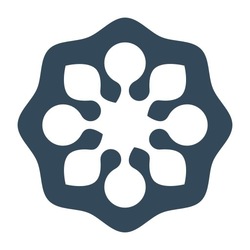
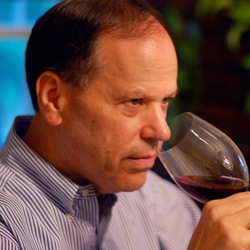



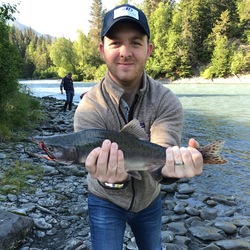
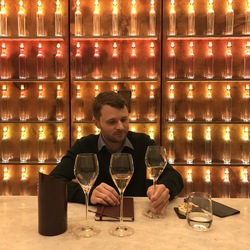
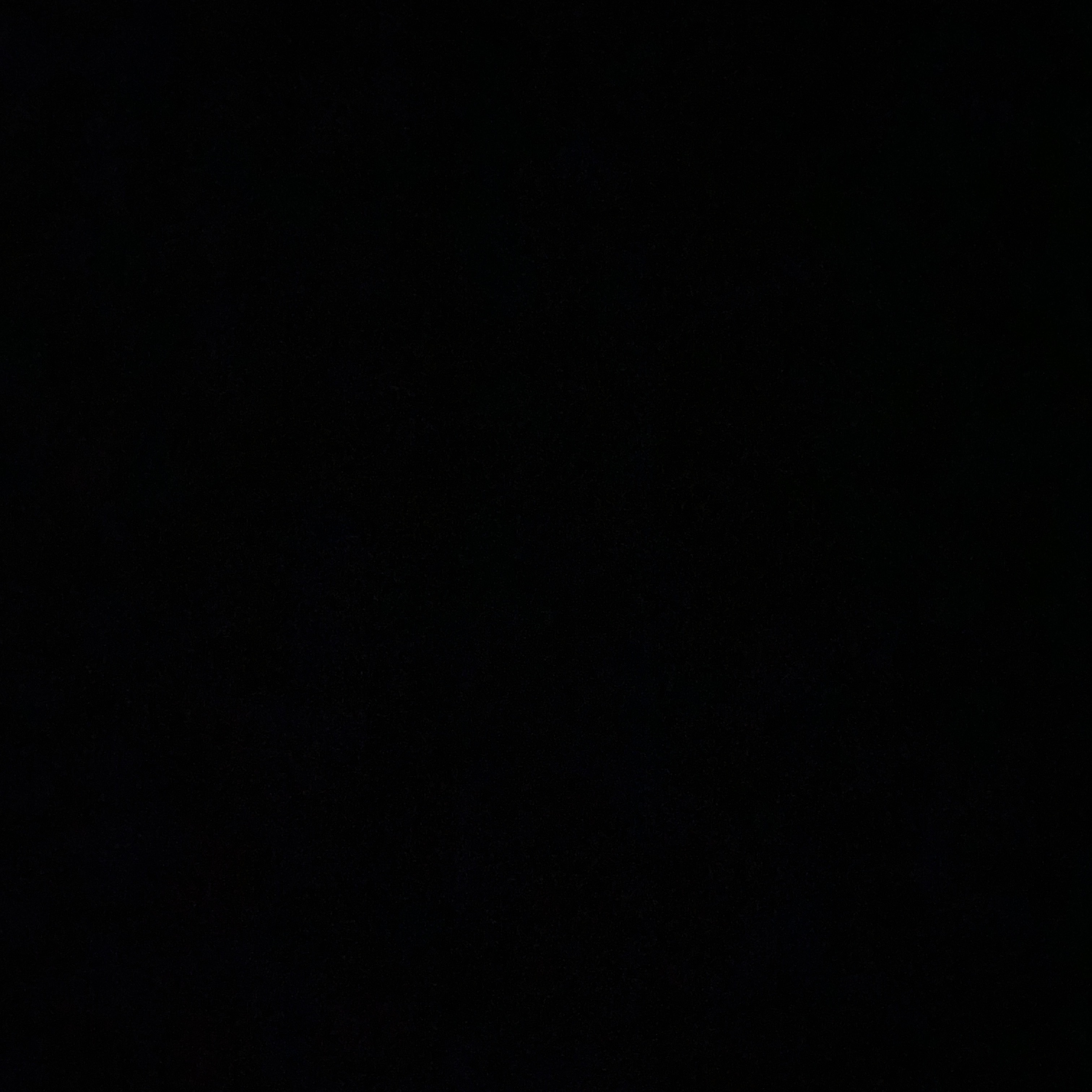
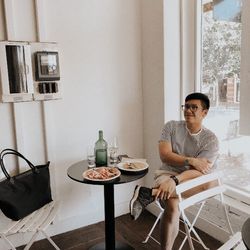



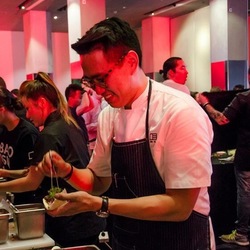

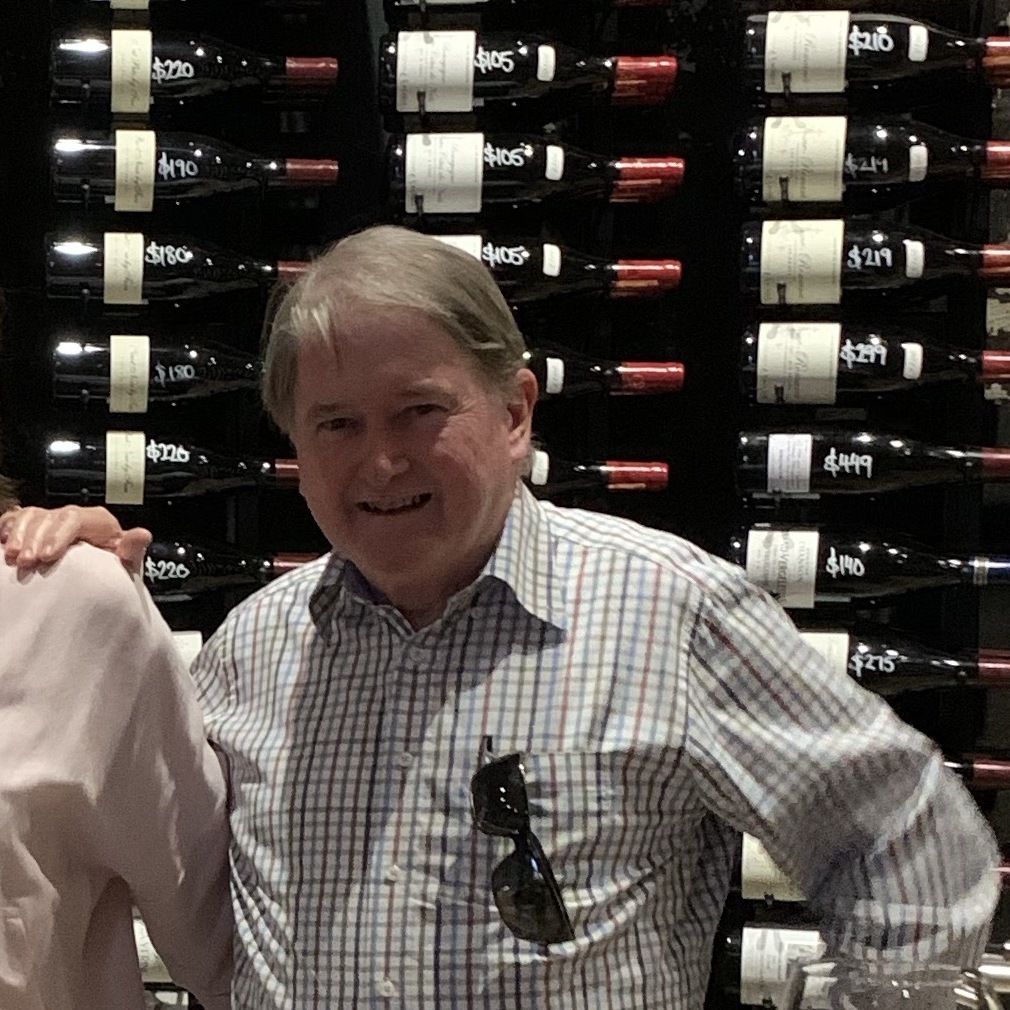







Byron Hewett
6th of 6 RSVs at this dinner. 3rd of 3 Arnoux RSVs. This was smoking good and it was clear the 2 2001s were the red wines of the night. Strong similarities between the 3 Arnoux wines and the Cathiard. The Cathiard holdings are adjacent to those of Arnoux. Intense core of focused sappy red fruits. Plenty of tannins and acidity that makes you salivate. — 4 years ago